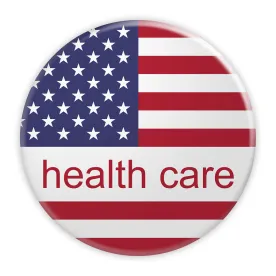Expansion of association health plans
The Department of Labor (DOL) recently published a proposed rule that would expand the ability of groups of unrelated employers (including sole proprietorships and self-employed individuals) to join together to form a single insured health plan for certain legal purposes. This type of plan is often referred to as an “association health plan” (AHP). This proposed rule was a response to an executive order from President Trump in which he expressed a desire to expand access to AHPs to help small businesses overcome their competitive disadvantages through “large group” benefits structures and premium pricing.
The proposed rule would expand the situations where AHPs can be established. Previously, a group of employers could only establish an AHP if the group had a purpose other than offering health coverage. However, under the proposed rule, a group of employers could band together as a single “employer” for the sole purpose of offering health coverage if the participating employers are:
-
in the same trade, industry, line of business, or profession; or
-
have a principal place of business within a region that does not exceed the boundaries of the same state or the same metropolitan area (even if the metropolitan area includes more than one state).
Nevertheless, the proposed regulation does retain the AHP requirement that a group or association have a formal organizational structure with a governing body and by-laws or other similar indications of formality.
One anticipated benefit of the proposed rule would be that the new definition of “employer” would also apply under the Affordable Care Act (ACA). This would allow certain groups of small employers to band together to provide health coverage subject to the more advantageous “large group” coverage rules under the ACA. Under the “individual” and “small group” rules that currently apply, small employer plans are subject to certain premium rating restrictions and must cover often costly “essential health benefits.”
Nevertheless, to address fears that AHPs could be used to discriminate against sick employees, the proposed rules include nondiscrimination requirements regarding health coverage eligibility and premium costs. These nondiscrimination rules would apply to all AHPs regardless of their size. For example, an AHP would be prohibited from restricting coverage of an individual based on his or her health conditions.
Although the proposed rule would expand the ability to establish an AHP, an AHP would remain a type of a multiple employer welfare arrangement (MEWA). As such, an AHP would be subject to state insurance mandates and a variety of special federal requirements. On that front, the approach that states ultimately take to regulate AHPs (including those that may cross state lines) may affect their attractiveness.
ACA Cadillac tax delay
The 40% “Cadillac” tax on high-cost employer-sponsored health plan coverage has survived to fight another day as its repeal was not included as a part of federal tax reform. However, Congress and President Trump approved a two-year suspension of when the tax would begin to apply. Now, unless the tax is repealed or delayed again, it will not become effective until 2022.
Although bipartisan support for the elimination of the Cadillac tax is significant, it remains to be seen whether it will be repealed altogether. Therefore, for now, employers should plan for its implementation in 2022.




 />i
/>i

